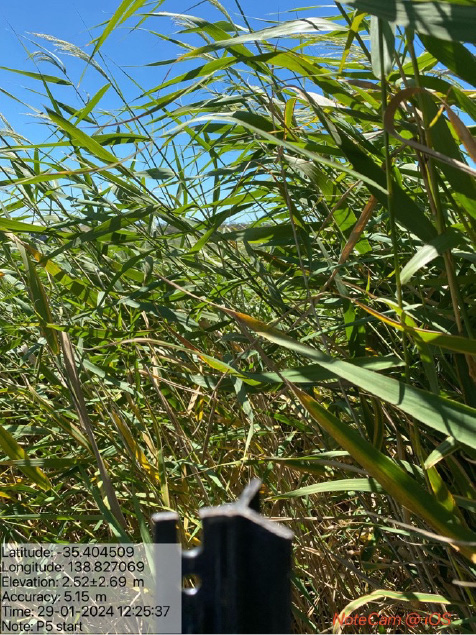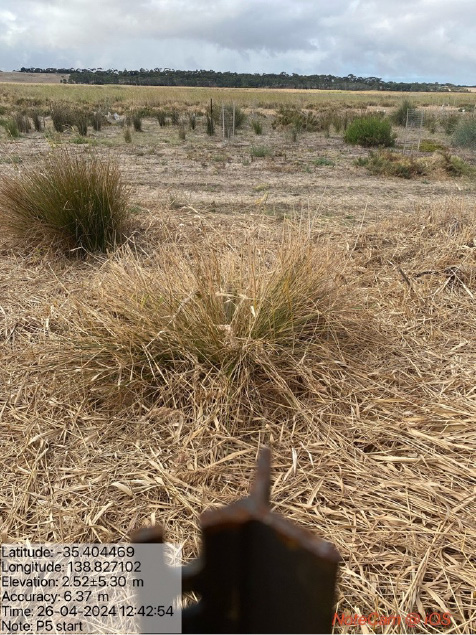A key component of our conservation work is managing threatening processes. While people often consider the threats of invasive species, when we are working to restore the balance of an ecosystem, we are sometimes managing the threats of overabundant native species.
This is the case at Watchalunga Nature Reserve, located in South Australia's Fleurieu Peninsula, where managing Phragmites australis (Common Reed) is an important aspect of our conservation management plan.
Watchalunga is believed to be home to the largest population of Mount Lofty Ranges Southern Emu-wren (Stipiturus malachurus intermedius) and is thus critically important for the conservation of the species. Phragmites threaten the Emu-wren habitat as they grow through other vegetation and engulf it, forming dense monocultures. Phragmites management is essential for protecting the areas revegetated by our annual planting days, and the existing remnant habitat on the nature reserve.
In addition to being a vital aspect of our work across all nature reserves, protecting existing habitats and managing threats is a goal of the recently released Re-bird the Ranges Action Plan, which includes our work on Watchalunga and Para Woodlands Nature Reserves.
Phragmites growth is fast, with the invasion front moving at around 2 metres per year.
There are four documented methods of controlling Phragmites australis:
- Cut and drown
- Burn
- Slash
- Spray
The first two methods, cut and drown, and burn, aren't feasible at Watchalunga Nature Reserve. Drowning requires altering the area's hydrology, which is not a viable option as this wetland is an open system. Burning, while very effective in managing swamps, could have a detrimental impact on the Emu-wren population due to the potential destruction of their habitat.
Research shows that slashing and spraying are maximally effective when used in combination, so this is the approach we are taking.
Timing is a vital factor for managing Phragmites. The aboveground biomass is highest in summer, making it the perfect time to spray because the plant has the largest surface area to absorb the herbicide. Spraying must also occur when the plant is flowering before directing its energy into its rhizomes underground, which, if unmanaged, will then reappear approximately 2 metres away in spring.
A couple of weeks after spraying, the Phragmites is then slashed. As a result of these activities, when the plant begins to regenerate in spring, it grows back weaker, and the process is repeated annually.
We recently completed this process at Watchalunga with the valuable assistance of our volunteers. Seven volunteers spent two days supporting our team with slashing Phragmites australis, along with:
- Clearing tracks to assist movement around the reserve
- Slashing around the causeway area in preparation for the new causeway construction (funded through our 2024 Vital Work Appeal)
- Tidying revegetation areas and replacing tree guards
These crucial tasks play a significant role in conserving, restoring, and protecting our precious native habitats. Their efforts have a direct and positive impact on the environment, and the volunteers involved should be proud of their contribution.
To monitor the effectiveness of this threat management, we have established monitoring transects and take regular photo point data to visually record the impact. These photos show how tall and dense the Phragmites australis were before we commenced management in 2023 and how the treatment has not only cleared the area but also uncovered some revegetation plantings that had been engulfed by the front and can now thrive.


We extend our heartfelt thanks to our volunteers: Issy, Vicki, Catherine, Ian C, Ian H, Phil, and Anthony. Their wonderful work alongside Nature Foundation staff Jem Shimmield and Carolyn Pickering, and reserve contractors, Second Nature Conservancy, is greatly appreciated. Their contribution is invaluable to our conservation efforts.
Learn more about Watchalunga Nature Reserve here
Learn more about and register your interest in our Volunteer program here
Learn more about our involvement with rebirding the Mount Lofty ranges here